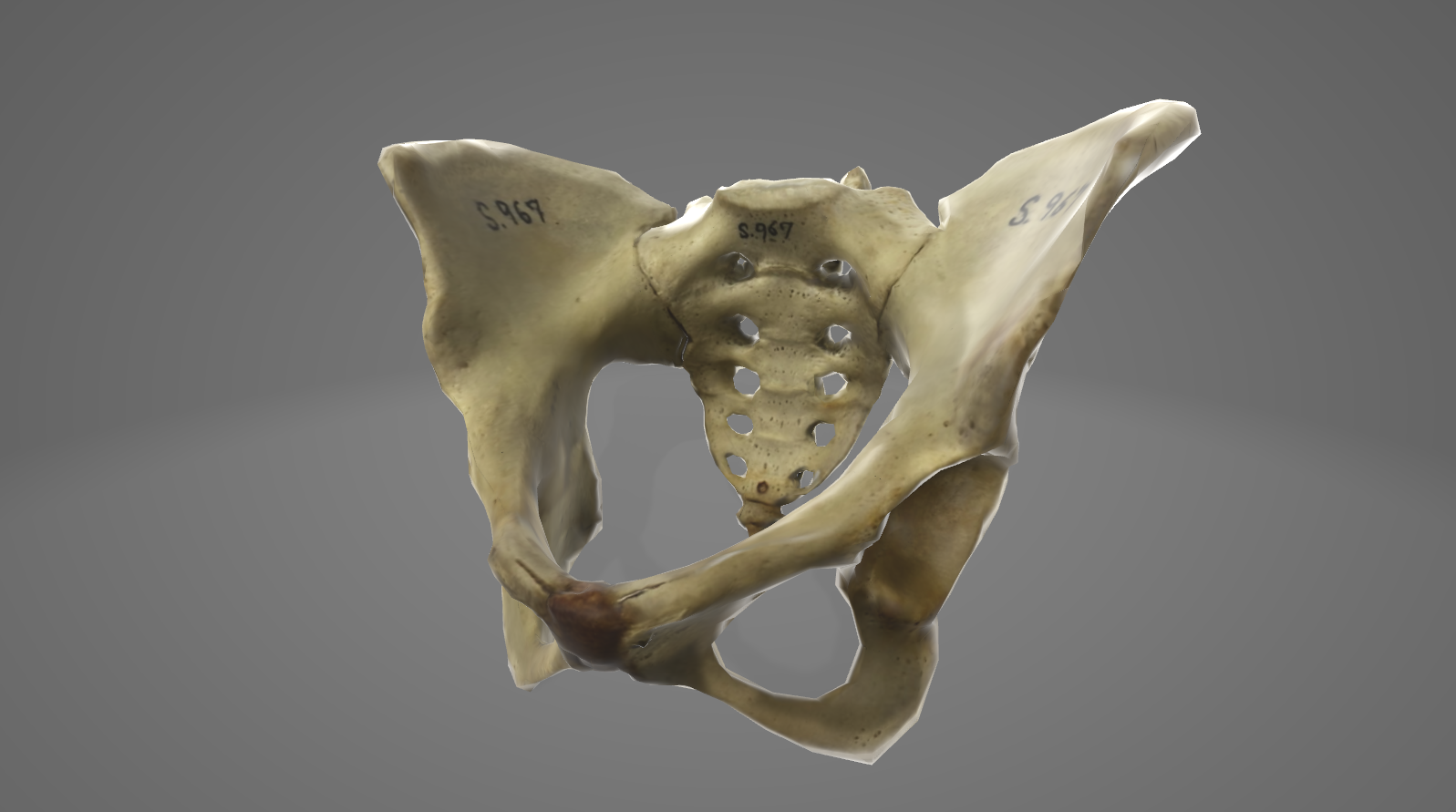Applications of Blender for Medical Media Production: A Case Study on Texturing of 3D Bone Models
Main Article Content
Abstract
This article presents a case study on the use of Blender software for creating medical media, with particular focus on texturing techniques to create a 3D bone model. The purpose of this study is to illustrate how educational media are being developed for use in health science education. In the modern era, the development of medical technology is proceeding at a rapid pace. Hence, applying various kinds of health science educational media is essential for teaching and learning in medical school. 3D application is a technology used for creating educational media for the healthcare industry, especially 3D models of human bones in anatomy. These 3D models were created by using a surface texturing technique that was based on actual bone. These involve a seven-step process that includes analyzing the data, studying 3D modeling in detail, unfolding the surface on a 3D model into a 2D plane to paint or edit the texture on the model by using Stencil. This technique involves the incorporation of photographs of skeletal structures into the 3D skeleton model that precisely resembles the real bone anatomically. Additionally, the software tools allow fine-tuning of color and human bone detail to produce models which appear like the original prototype. The finished product is then exported for quality control before being used in the creation of educational media. The textured surface of the skeletal model closely resembles the original prototype, showcasing how Blender software can be employed for texturing 3D bone models to enhance medical learning materials. Therefore, Blender software used to texture a 3D bone model is an effective way for developing and improving 3D models in health science education.
Article Details

This work is licensed under a Creative Commons Attribution-NonCommercial-NoDerivatives 4.0 International License.
References
กรรณิกา เย็นประสิทธิ์, อานนท์ ขาวละเอียด, ไพโรจน์ สมุทรักษ์.
การใช้พื้นผิวภาพ UV ในการโมเดล 3 มิติ เพื่อการประมวลผลที่รวดเร็วและสมจริง. [อินเทอร์เน็ต]. 2561 [เข้าถึงเมื่อ 2565 พ.ย. 8]. เข้าถึงได้จาก https://sc.chandra.ac.th/phairoj-s/index.php/2018/09/19/paper1/
คเณศ ประกอบแก้ว. งานวิจัยดีเด่นด้านภาพสามมิติ อีกหนึ่งก้าวของโลกเสมือนที่ใกล้เคียงโลกความเป็นจริง. [อินเทอร์เน็ต]. 2564 [เข้าถึงเมื่อ 2565 พ.ย. 8]. เข้าถึงได้จาก https://as.nida.ac.th/
จินตนา เวชสวัสดิ์. กายวิภาคศาสตร์ Essential Atlas of Anatomy. กรุงเทพฯ: สุวีริยาสาส์น; 2548:14-23
จิรัญดา กฤษเจริญ. การประยุกต์ใช้ Augmented Reality เพื่อการเรียนการสอนกายวิภาค. ศรีนครินทร์เวชสาร 2563;35(1):99-102.
ณัฐวัฒน์ โลหะนําเจริญ. สอนเทคนิคการ Preview ไฟล์ 3 มิติ โดยไม่ต้องเปิดโปรแกรม. [อินเทอร์เน็ต]. 2560 [เข้าถึงเมื่อ 2565 พ.ย. 18]. https://www.siamreprap.com/2017/11/mixed-reality-viewer-for-preview-3d-modle/
บริษัท บิมอ็อบเจ็คท์ (ไทยแลนด์) จำกัด. รวม 10 โปรแกรมออกแบบ 3 มิติ ใช้ได้ตั้งแต่มือใหม่จนถึงมืออาชีพ. [อินเทอร์เน็ต]. 2564 [เข้าถึงเมื่อ 2566 ม.ค. 18]. เข้าถึงได้จาก https://bimspaces.com/blog/best-of-3d-modeling-software/
พสิษฐ์ บริสุทธิ์ศรี. ขั้นตอนการสร้างโมเดลในสำหรับเกม 3 มิติ Progressive. ปริญญาวิทยาศาสตร์บัณฑิต สาขาเทคโนโลยีมัลติมีเดียคณะเทคโนโลยีสารสนเทศสถาบันเทคโนโลยีไทย-ญี่ปุ่น;2561.
พูนศักดิ์ ธนพันธ์พาณิช. ZBrush for modeling. กรุงเทพฯ: เอส.พี.ซี.บุ๊คส์; 2551:2-12
บริษัท มีฟาซอฟต์ จำกัด. UV Mapping คืออะไร. [อินเทอร์เน็ต]. 2562 [เข้าถึงเมื่อ 10 กุมภาพันธ์ 2566]. เข้าถึงได้จาก https://www.mifasoft.com/uv-mapping
ศศิกร ผางามวิจิตร. กระบวนการผลิตโมเดลงานแอนิเมชั่น 3 มิติสำหรับเกมเพื่อบริษัท อิ้กดราซิลกรุ๊ป. ปริญญาวิทยาศาสตร์บัณฑิต สาขาวิชาเทคโนโลยีมัลติมีเดียคณะเทคโนโลยีสารสนเทศ สถาบันเทคโนโลยีไทย-ญี่ปุ่น;2561.
สุพัตรา ธิชัย. การพัฒนาบทเรียนคอมพิวเตอร์ช่วยสอนสำหรับเสริมการเรียนวิชา กายวิภาคศาสตร์และ สรีรวิทยา 1 เรื่อง Anatomy and Physiology of Skeletal Muscular System ของนักศึกษาพยาบาลชั้นปีที่ 1. วิทยานิพนธ์ศิลปะศาสตร์มหาบัณฑิต สาขาวิชาเทคโนโลยีการศึกษา มหาวิทยาลัยศิลปากร; 2544.
อนันต์ อยูคําประเมิน. การเพนท์ภาพสีอะครีลิคเพื่อพื้นผิวโมเดลสามมิติ. สาขาวิชาคอมพิวเตอร์อาร์ต คณะดิจิทัลอาร์ต มหาวิทยาลัยรังสิต ปทุมธานี ประเทศไทย; 2562.
อรพิน ยงวัฒนา. Grand Atlas of Human Body ร่างกายมนุษย์. กรุงเทพฯ: สุวีริยาสาส์น; 2555. 8-19
Baumberg, Adam. Blending Images for Texturing 3D Models. Proceedings of the British Machine Vision Conference. 2003 10.5244/C.16.38.
James Chronister. Blender Basics [Internet]. 2017 [cited 2023 Jun 10] Available from: https://www.cdschools.org/cms/lib/PA09000075/Centricity/Domain/81/BlenderBasics_5thEdition2017.pdf
Jay Versluis. Stencil Painting in Blender [Internet]. 2021 [cited 2023 Jun 10] Available from: https://www.versluis.com/2021/10/stencil-painting-in-blender/
Oliver Villar. Learning Blender: A Hands-On Guide to Creating 3D Animated Characters. Addison-Wesley Professional;2014.
Patricia Ließ. Analysis and improvement of Blender’s texture painting functionality [Internet]. 2019 [cited 2023 Jun 10] Available from: https://core.ac.uk/download/pdf/334755904.pdf
Pluralsight LLC. Differences between Displacement, Bump and Normal Maps [Internet]. 2022 [cited 2023 Jun 10] Available from: https://www.pluralsight.com/blog/film-games/bump-normal-and-displacement-maps
Dovramadjiev, Tihomir. BLENDER BASICS – UNWRAP - TUTORIAL. 2018. 10.13140/RG.2.2.12126.69441.






